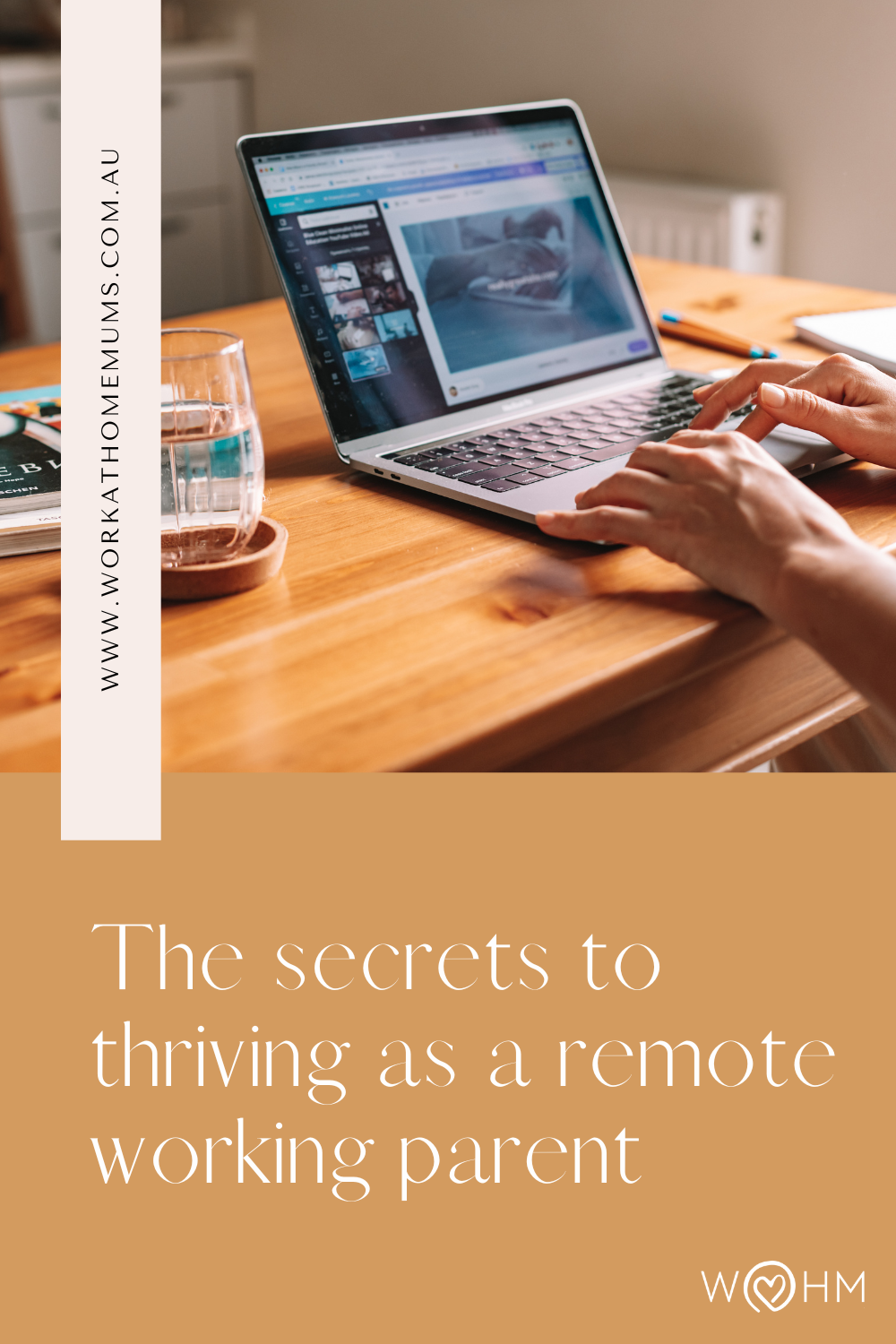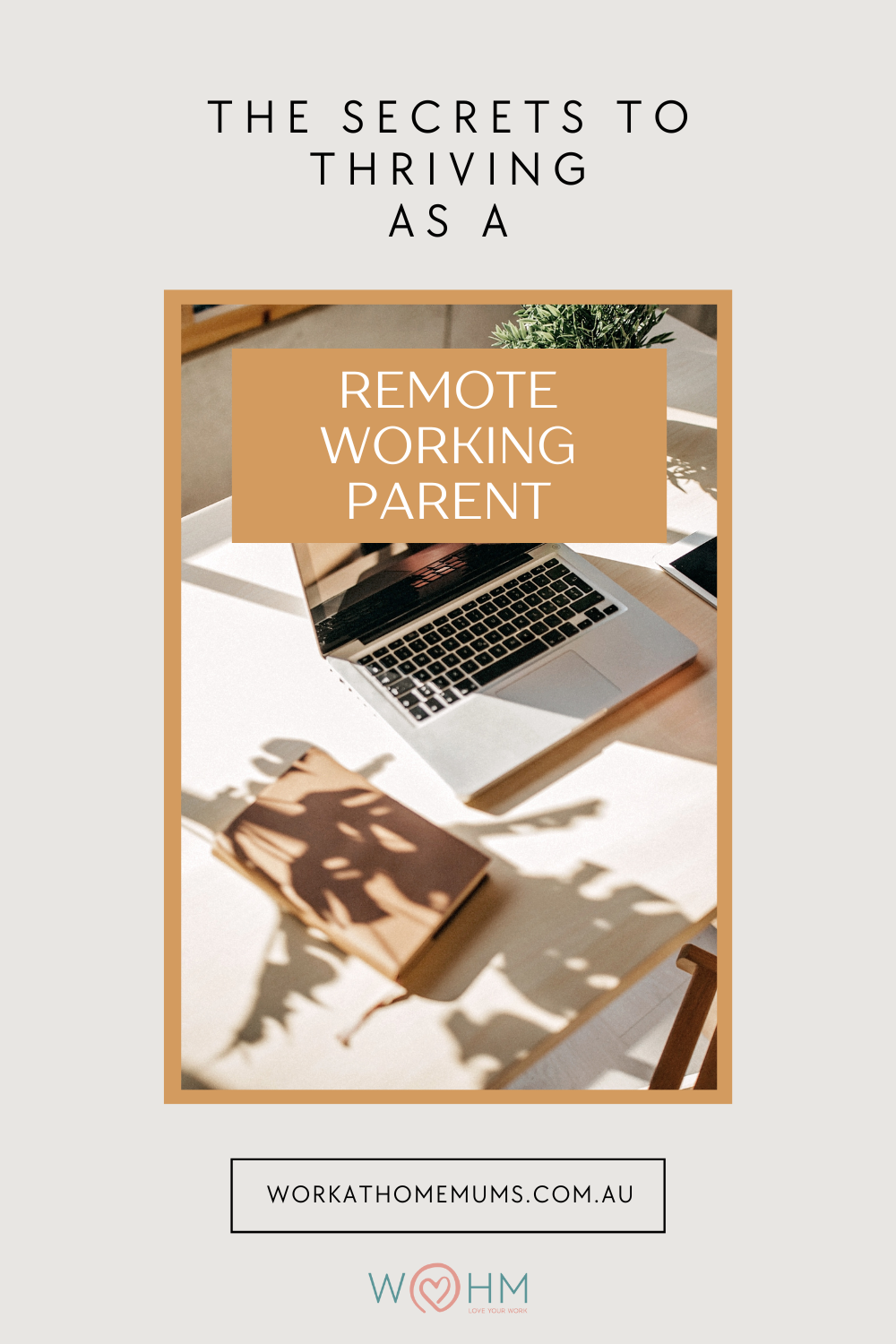Imagine a work-life scenario where you have ultimate freedom and flexibility, where your professional success thrives alongside the joys of family. Welcome to the realm of remote working parents – a growing group of people who have unlocked the secrets to juggling their careers with the demands of family life.
We’re about to unveil the insider tips and tricks that can help people excel in their remote work setups, ensuring success both in their professional and personal lives. From creating a productive workspace to establishing a schedule that works for you, and even nurturing your own well being. We’ll guide you through the steps to thrive as a remote working parent.
So, let’s dive in and discover the secrets that will empower you to achieve it.
The Benefits of Remote Work
One of the biggest perks of working remotely is the freedom it offers. No longer tied to a traditional office space, remote workers have the ability to choose where and when you work. This newfound flexibility allows you to structure your days in a way that best suits your needs and the needs of your family.
Whether it’s being present for school drop-offs and pick-ups or attending to a sick child without having to take a day off, remote work offers the flexibility and freedom that can greatly enhance a mum’s work -life balance.
In addition to flexibility, remote work also eliminates the daily commute. For busy mums, this means more time saved and less stress endured. Instead of spending hours stuck in traffic or crammed into a crowded train, remote work can allow you the luxury of using that time for yourself, your family, or even extra working hours. This extra time can be spent on self-car, pursuing hobbies, or simply precious moments of relaxation before diving into work tasks.
There can be some significant financial benefits to working from home. You can easily save money on fuel, parking or public transport costs, less maintenance on your car, even cheaper lunches! If you have solar on your house, you can even be strategic and start doing your washing machine and other appliances during the day using solar energy instead of night time when you get home from work saving you on your electricity bill too.
Another benefit of remote work is the opportunity to create a personalised and comfortable workspace. No longer constrained to a generic office environment, remote work allows you the freedom to design your work area in a way that best supports your productivity and well-being. Whether it’s a cosy corner in the living room or a dedicated home office, having a space that reflects your personal style and preferences an greatly enhance job satisfaction and overall work-life balance.
Remote work also opens up a world of possibilities for career advancement. With the ability to work from anywhere, you can take advantage of job opportunities that may not be geographically feasible in a traditional office setting. This means that remote working mums can continue to grow their careers without sacrificing the flexibility you desire.
Lastly, remote work can provide you with an increased sense of control over your own professional journey. By being able to set your own schedule and work independently, you can take ownership of your work and feel empowered to make decision that align with your personal and professional goals. This sense of control can be incredibly empowering and can lead to greater job satisfaction and overall success.
Drawbacks of Remote Work
As with any work arrangement, there are both pros and cons to remote work. Now that we’ve explored the advantages, let’s take a closer look at the potential challenges that remote workers may face.
One of the main drawbacks of working remotely is the blurred boundaries between personal and professional life. When your workspace is within the same walls as your home life, it can be difficult to separate the two. The lack of physical separation can make it challenging to switch off from work and fully engage with family time. This can lead to feelings of guilt or a constant sense of being pulled in multiple directions.
Another negative is the potential for isolation and limited social interaction. Remote work can be isolating, especially for people who are used the camaraderie and support that comes from working in a traditional office environment. Without colleagues nearby, it can be challenging to bounce ideas off others, collaborate on projects or simply enjoy casual conversations during lunch breaks. This isolation can impact mental well-being and may require remote workers to be proactive in seeking social connections outside of work.
Additionally, remote working may present challenges when it comes to setting boundaries with family members. While remote work offers flexibility, it can also blur the lines between work time and family time. You may find it difficult to juggle your work responsibilities while attending to the needs of your children or manging household tasks. You might also find well meaning family or friends want to schedule time with you or drop in because they know you are at home. Without clear boundaries and a defined schedule, it can be challenging to maintain productivity and ensure that both work and family receive the attention they deserve.
Despite these drawbacks, remote work can still be a fulfilling and rewarding choice. By addressing these challenges head-on and implementing strategies to overcome them, remote working can allow you to create a balanced and successful lifestyle that allows you to thrive both personally and professionally.
Setting Up a Productive Workspace
Setting up a workspace that allows you to be productive is crucial for remote workers to navigate the challenges that come with balancing work and family responsibilities. By creating a designated area that is conducive to focus and productivity, you can establish clear boundaries between your work and personal life. This not only helps in maintain a sense of professionalism but also ensures that you can efficiently manage your time and meet deadlines.

One of the first steps in setting up a productive workspace is finding a quiet and distraction free area in the house. Having a separate room or a designated corner can provide the necessary space for concentration and minimize interruptions from family members or household shores. It’s essential to communicate with family members about the importance of uninterrupted work time and establish a system to minimize disruptions during these periods.
Investing in the right equipment and technology is another key aspect of creating an effective workspace. A reliable computer of laptop, a comfortable chair and a functional desk are the basic essentials that every remote worker should prioritise. Additionally, ensuring a stable internet connection and having the necessary software and application can significantly enhance productivity and efficiency.
Organisation plays a vital role in an productive workspace. Having a clutter-free and well organised environment reduces distractions and allows you to focus on your tasks more effectively. Implementing storage solutions such as shelves, drawers or filing cabinets can help keep important documents and supplies easily accessible and in order.
Lighting and ergonomics are often overlooked but are essential for a comfortable and conductive workspace. Natural light is preferable as it can boost mood and productivity. If that’s not possible, investing in proper lighting fixtures that mimic natural light can make a significant difference. Additionally, ensuring ergonomic furniture and accessories such as an adjustable chair and a keyboards and mouse that promote good posture can prevent discomfort and physical strain during long work hours.
By setting up a productive workspace, remote workers can create an environment that fosters focus, efficiency and productivity. Once this foundation is established you can then mov on to establishing a schedule and routine that further supports your success.
Establishing a Schedule and Routine
Having a clear schedule and routine is a great way for those that work from home to effectively mange their time and achieve a healthy work-life balance. Without a structured plan in place is can be easy to get overwhelmed by the demands of both work and family responsibilities. Fortunately, with a little organisation and discipline, it is possible to create a schedule that allows for productivity and flexibility.
The first step in establishing a schedule is to identify your more productive hours of the day. Some individuals are morning people and find that they are most alert and focused in the early hours. Other may work better in the afternoon or evening. Determine when you are at your peak performance and schedule your most important tasks during those times. This will ensure that you are able to give you best effort when it’s needed.

To create a routine, it can be helpful to break your day into manageable chunks of time. Allocate specific time periods for different activities, such as focused work, breaks, personal tasks and family time. By doing so, you can prioritise your tasks and avoid becoming overwhelmed by trying to do everything at once. Remember to include breaks in your routine to recharge and avoid burnout. Taking short walks, practicing mindfulness or engaging in activities that bring you joy can help maintain your overall well-being and productivity.
Flexibility is a key aspect of remote work and it’s important to build that into your schedule and routine. Unexpected interruptions or last-minute family commitments may arise, and having some flexibility in your schedule will allow you to adapt without feeling overwhelmed. Consider setting aside a block of time each day for unexpected tasks. This way, you can address anything that comes up while still maintaining a sense of structure.
It is essential to communicate your schedule and boundaries with both your work and family. Inform your colleagues and clients about your availability and working hours (for example if you’re not available between 8:30 and 9 due to school drop off). Establish clear boundaries with your family members, explaining when you need work time and when you will be available for them. By setting and maintaining these boundaries you can ensure that you have dedicated time for both work and family responsibilities.
Balancing Work and Family Life
Balancing work and family can be a challenge for remote workers, but with effective communication and boundary setting it becomes achievable. Remote work can allow for easier adjustments when things pop up, such as being able to keep your child home if they are unexpectedly sick and not needing to take the day off work. It can also allow you to be more present at events, such as school award assemblies, or enabling you to get to an after school activity.
One strategy that can help in maintaining a balance that we’ve already talked about it scheduling. Set specific working hours where you can dedicate your focus solely to work tasks. Likewise, establish specific blocks of time for family activities and be present during those moments. By adhering to a basic schedule you can ensure that both work and family receive the attention they deserve.
Another strategy is to leverage technology and productivity tools to optimise your work efficiency. Use project management tools to stay organised and prioritise tasks. Automate certain processes and delegate tasks when possible to lighten your workload. By streamlining your work processes, you can free up more time for your family without compromising the quality of your work.
The most important thing to remember when balancing work and family life is that not everything has the same amount of importance at the same time. Sometimes you will need to meet a deadline and work will need to come first and that’s ok. At other times you want to be spending time with your family, and it’s ok to not think about work during those times and be present and enjoy that time.
Taking Care of Yourself
In addition to optimising your work efficiency with technology and productivity tools, it’s equally important to prioritise self-care as a remote working parent. By taking care of yourself, you not only enhance your own well-being but you also become more present and effective in your family life. So, let’s explore some strategies for self-care that will help you thrive in your remote working journey.
First and foremost, establish clear boundaries between work and personal life. When working remotely, its easy for the lines to blur and you may find yourself working around the clock. Set specific work hours and stick to them as much as possible to maintain that boundary.
Another vital aspect of self-care is taking breaks throughout the day. Sitting at a desk for extended periods can be exhausting and detrimental to your well-being. Instead, make it a point to take short breaks to stretch, walk around or engage in activities that bring you joy. These brief moments away from work will not only re-energise you but also enhance your focus when you return to your tasks.
Additionally, prioritise physical exercise as it plays a significant role in maintaining your overall health. Incorporate regular physical activity into your daily routine, whether it’s going for a walk, heading to the gym, doing a workout at home or practicing yoga. Physical exercise not only boosts your energy levels, but it also improves your mood and reduces stress, allowing you to approach your work and family life with a renewed sense of positivity.

Don’t underestimate the importance of taking care of your mental health. Working remotely can be quite mentally refreshing for some, but for others it can sometimes lead to feelings of isolation or burnout. Make it a priority to nurture your mental well-being by engaging in activities that help you relax and decompress. This could include reading a book, practicing meditation or mindfulness, journaling or simply enjoying a hobby.
Lastly, remember to stay connected with a support system of fellow remote workers. Building a community of like-minded individuals who understand the unique challenges you face can be invaluable. Whether it’s through online forums, social media groups, or local meetups, forging connections with other remote workers provides and opportunity to share experiences, seek advise and find support in this shared journey.
Taking care of yourself is a fundamental component of thriving as a remote working parent. By setting boundaries, taking breaks, prioritising physical exercise, nurturing your mental health and building a support system, you can achieve a harmonious balance between your professional and personal life. As you embark on this journey remember that investing in your own well-being ultimately benefits not only yourself but also those around you.
Final Thoughts
Mastering the art of remote work as a parent is within your reach. By embracing the benefits, tackling the drawbacks head-on, and creating a productive workspace, you can set yourself up for success.
Establishing a schedule and routine, finding the delicate balance between work and family and prioritising self-care are crucial for thriving in this unique juggling act.
Remember you have the power to excel in your career while maintaining a fulfilling personal life. As you apply these secrets today, you’ll uncover the perfect equilibrium of being a work at home parent. Take the leap, embrace the challenge and rewrite the rules to suit your fife.








